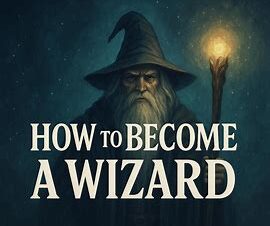“The Age of Enlightenment — Reason, Reform, and the Wizard’s Code of Ethics”
🎯 Learning Objectives
By the end of this lecture, you should be able to:
- Explain how the Enlightenment continued the work of the Scientific Revolution while emphasizing reason, equality, and ethics.
- Identify key thinkers—Descartes, Locke, Voltaire, Kant, Jefferson—who shaped the wizard’s ethical and rational philosophy.
- Understand how logic, liberty, and responsibility form the Wizard’s Code.
- Recognize the Indigo Wizard’s view of enlightenment as both intellectual and spiritual illumination.
- Apply Enlightenment principles to personal integrity and service in modern life.
📜 Lecture Script
1. From Discovery to Responsibility
The Scientific Revolution revealed the universe’s laws; the Enlightenment asked what those laws mean for human life.
If nature is ordered, can society be ordered by reason rather than superstition or tyranny?
If all people share reason, do they not share dignity and rights?
Thus, wizardry entered a new phase—no longer focused only on cosmic truth, but on moral truth.
A true wizard now had to master wisdom of heart as well as mind.
2. The Light of Reason
The word Enlightenment itself means “bringing to light.”
The movement sought to dispel the darkness of ignorance and oppression through education, science, and reform.
- René Descartes (1596–1650) declared, “I think, therefore I am.” The wizard’s awareness of self becomes the foundation of truth.
- John Locke (1632–1704) taught that humans are born with natural rights—life, liberty, property.
- Voltaire (1694–1778) wielded wit against hypocrisy, defending freedom of thought.
- Immanuel Kant (1724–1804) urged, “Dare to know!” and defined enlightenment as “man’s emergence from self-imposed ignorance.”
Every wizard must live by that same motto.
3. The Wizard as Reformer
The Enlightenment gave birth to revolutions of both ideas and nations:
- America’s Founders envisioned liberty through reason.
- Scientists organized knowledge into encyclopedias for all.
- Abolitionists and educators fought to uplift humanity through understanding.
Wizardry became not only mystical but civic: wisdom used to serve justice.
“The pen became mightier than the sword,
and truth became a weapon of peace.”
4. The Wizard’s Code of Ethics
Throughout history, wizards were judged not only by their knowledge but by their character.
The Enlightenment clarified that intellect without virtue leads to corruption.
Hence arose the Wizard’s Code of Ethics—a modern articulation of timeless truths:
- Seek Truth: Question boldly, but humbly.
- Do No Harm: Use knowledge for healing, never for domination.
- Respect Freedom: Every soul has the right to learn and grow.
- Serve the Common Good: Wisdom is a public trust.
- Balance Reason and Compassion: Logic without empathy is cruelty; empathy without logic is blindness.
These principles echo through the halls of the Grey School and every authentic tradition of wizardry.
5. The Indigo Wizard’s Light Within
For Indigo Wizards, “Enlightenment” is not only social reform—it is inner awakening.
The rational light of the mind must merge with the intuitive light of the heart.
To the Indigo, logic is not cold—it is luminous clarity.
Compassion is not weakness—it is understanding extended into action.
Self-discipline and integrity become magical acts: shaping reality through consistent truth.
When Descartes sought certainty through thought, the Indigo Wizard seeks balance through awareness.
6. Shadows of Reason
Yet even this bright age had shadows.
The same reason that freed people also built machines of war.
Empires justified conquest as “civilization.”
Science without conscience became as dangerous as superstition.
Thus, every wizard must remember:
Knowledge is power, but wisdom is restraint.
To wield reason rightly, one must keep the heart awake.
7. The Role of the Modern Wizard
Today’s wizard continues the Enlightenment’s quest:
- To educate without arrogance.
- To heal without self-interest.
- To defend truth against distortion.
- To preserve balance between technology and humanity.
Each act of clarity, kindness, or teaching continues the Enlightenment—one mind at a time.
8. Reflection Exercise
In your journal:
- Which Enlightenment thinker resonates most with you, and why?
- Which of the Wizard’s Code principles feels most challenging in your life?
- Write a personal “Enlightenment Pledge,” beginning with:
“I will use my reason and compassion to…”
Then, meditate on how you can be a light in your family, workplace, or community.
9. Closing Meditation
Sit comfortably.
Visualize yourself holding a lantern. Its flame glows with blue-white clarity—cool, steady, eternal.
Around you lies a vast city in twilight—streets of confusion, fear, and noise.
You raise your lantern and whisper:
“Let there be light within me, and through me, light for others.”
As the glow spreads, imagine each lamp kindling another until the city shines with gentle brilliance.
This is enlightenment—the wizard’s true work.
*(continued in Lecture 2, Part 9: The Romantic Age — Emotion, Imagination, and the Return of the Mystic Wizard)
📚 References
- Immanuel Kant, What Is Enlightenment? (1784)
- John Locke, An Essay Concerning Human Understanding (1690)
- Voltaire, Letters on England (1734)
- Zell-Ravenheart, Oberon. Grimoire for the Apprentice Wizard. New Page Books, 2004.
- Grey School of Wizardry www.greyschool.net
